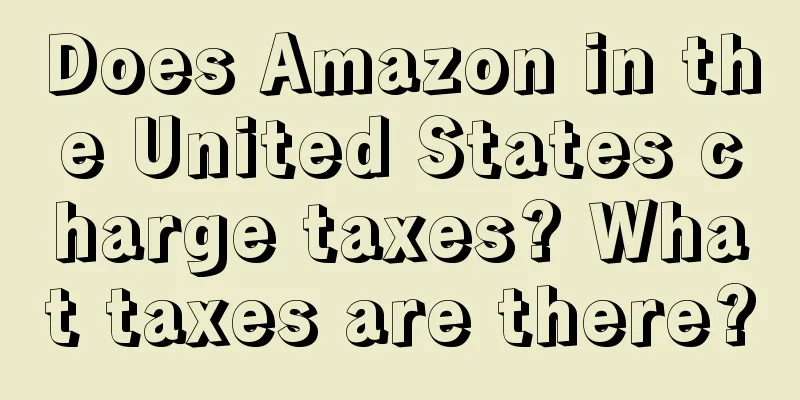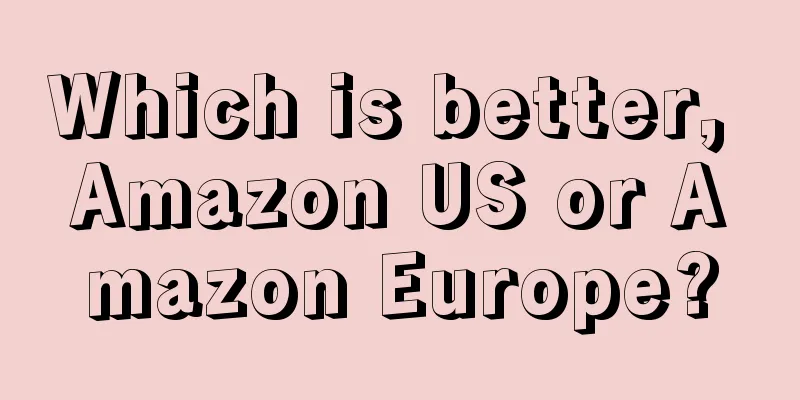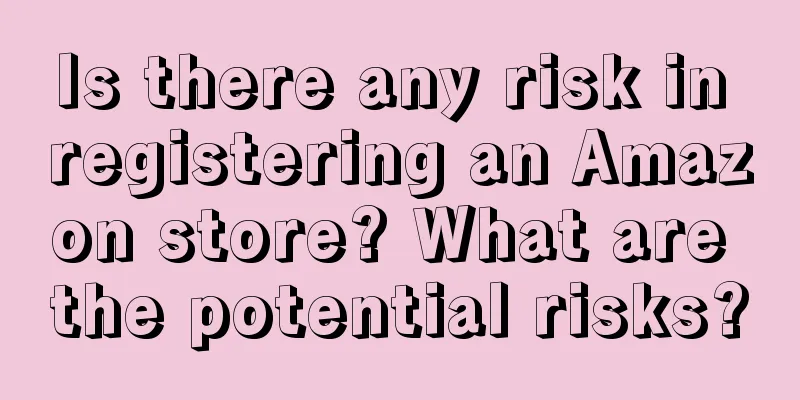A comprehensive analysis of the popularity of Zibo barbecue and the steps and system of brand hot spot marketing

On the first day of every year, I will create a new memo on my phone to record the social hot spots and popular marketing events that have occurred in the year. The benefit of doing this is not only that it helps me remember what happened in the year, facilitating year-end inventory and review, but more importantly, it allows me to understand the direction and trends of social culture and public psychology, determine where the marketing opportunities are, and thus trigger brand communication and sales. Analyzing cultural trends and marketing trends is a must for marketers, so I have recommended this method to many people. To observe and understand the mainstream social hot spots and trends, one platform that must be paid attention to is Weibo, which can be said to be the largest and perhaps the only social opinion field in China. There are two ultimate goals for companies to do marketing: one is growth, the other is branding. Creating and using hot spots well is of great significance for achieving sales growth and building an excellent brand. 1. Hot spots are an important factor driving purchasesMany companies tend to fall into a misunderstanding when doing marketing, that is, they are obsessed with persuading consumers, extracting a functional selling point and reason for purchase in the advertisement, and then brainwashing consumers through a large amount of media placement, and instilling a large amount of product quality and technical information to consumers, thinking that this will convince people to pay. I call this behavior the cognitive education trap . Because people are difficult to persuade, and the cost of educating consumers is extremely high. The most fundamental point is that consumers' real purchasing behavior is not to rationally think about what they need, carefully screen and compare all the products on the market, and finally choose the one with the best quality and the most cost-effective price. On the contrary, people's purchasing behavior is often random and easily influenced by others and social trends. Let me give you a few examples that happened around us and that everyone can feel. In December last year, the epidemic made canned yellow peaches popular; in February this year, a song by Li Ronghao led to the hot sales of black plum jam products; the high popularity of the TV series "Kuangbao" caused "The Art of War" to sell out. If there were no such hot events, would you have a demand for canned yellow peaches, black plum sauce, and The Art of War? Most likely not. If you were a seller of these products, even if you tried your best to advertise, I'm afraid it would still have little effect in the end, and it would be difficult to stimulate consumers' demand and desire to buy. Humans are social animals, and a person's needs and purchasing behavior always occur in a social environment. Without the foundation of social and cultural atmosphere and the promotion of hot events, it is difficult for a brand to trigger group buying by simply promoting product functions and educating consumers. For example, the recently popular Zibo barbecue has attracted national attention and heated discussions. During the May Day holiday, countless people went to Zibo to check in. (From "May Day Holiday Weibo Popularity Report") Why do consumers flock to Zibo? The key point is not how delicious it is, but the continued popularity and seeing others eating it have aroused people's strong curiosity and impulse to consume. This is the value brought by hot spots, and hot spots lead to hot sales. So how do we create this kind of hot spot and make the brand a cultural phenomenon that people talk about? Malcolm Gladwell, a best-selling author and one of the world's top thinkers, proposed a well-known three principles for detonating popularity in his book "The Tipping Point": power environment, the law of individual characters, and the adhesion factor. I think this is a classic framework for analyzing all popular phenomena. Let's use it to analyze why Zibo barbecue became popular and the steps to become a hot spot. 1. Insight into the social power environmentTo become a hot topic, you must first understand the social environment. The powerful environment is the water force that supports the hot spots. If the water does not rise, the boat will not rise. Only when the content you create conforms to the mainstream cultural psychology of society can it be popular. The powerful environment is extremely important. The reason why Zibo barbecue is popular is that since this year, the biggest social psychology is undoubtedly people's desire to enjoy life to the fullest, and food ranks first in enjoying life. It can bring people the most satisfaction and happiness. From an official perspective, stimulating economic growth, promoting the recovery of consumption of life services such as catering, culture, and tourism, and increasing the income of urban and rural residents are the keynotes of the government's work this year. Zibo barbecue has allowed people across the country to feel the fireworks in their lives again, which is undoubtedly what the government hopes to see. The first step in hot marketing is to analyze this cultural background, from the perspectives of public psychology, national policies, social culture, lifestyle, etc., to understand what today's consumers will pay attention to, what they are interested in, and what kind of content and communication can trigger their strong resonance and recognition, and will be reported by the media. 2. Find key figures to blastMost of the popular hot spots are not known to everyone at once, but ferment in a small circle first and then gradually spread outward. The rule of individual figures in the three principles of popularity refers to opinion leaders, who are the link that helps one thing establish a connection with the outside world. So if you want to become a hot spot, you need to find key figures to blast it and match the topic according to the psychology and needs of this group of people. As we all know, Zibo barbecue first became popular in the circle of college students. Young people are the main force driving social trends. Their every move will be watched and discussed by the entire network, and they have high potential for online discourse. For example, "special forces travel" has recently become popular. This is also a popular culture created by young people, which is in line with this year's consumer psychology. (From "May Day Holiday Weibo Popularity Report") 3. Explore topics with high stickinessThe last step of hot marketing is to explore the topic and find the adhesion factors in the topic. Adhesion refers to the elements that a popular item should have, whether it is unusual, impressive, unforgettable, or whether it can arouse people's interest and attention. Zibo barbecue has two topics with high adhesion. One is the food itself, which is large in quantity and affordable, and the way to eat it is novel and interesting. In particular, the novel way of eating skewers with green onions, dipping sauce, and then rolled with small cakes, plus the on-site hand-baking, this DIY makes barbecue very experiential and ritual. (Zibo barbecue picture source: Weibo @跑吧阿常) Don’t underestimate the power of consumption methods. “Twist, lick, and dip” has made Oreo popular for half a century and become the top snack brand. Second, there are various people-friendly measures in Zibo. Barbecue restaurants are inexpensive and provide thoughtful services. Local policies are also strictly controlled. Around May Day, there were an average of 3 or 4 hot search topics for Zibo tourism experience every day. Hot reports and wide acclaim have played an important supporting role in the continued popularity of Zibo barbecue. The above three points are the key steps to create hot spots. You can analyze that many successful hot spot marketing has done these steps well. 2. Hot discussion is an amplifier for building a brandNot long ago, in one of my fan groups, we discussed a question: What exactly are companies doing when they build brands, and what is the goal of building a brand? Some people believe that branding is about building trust; some people believe that it is about creating the “WOW” moment, or the Aha moment; and many others believe that the most important thing about branding is to create user resonance. All of these are correct, but if I had to choose, I would think that the most important thing in branding is to create familiarity. Making users resonate with the brand, fall in love with the brand, and exclaim "WOW" may be the highest level of branding, but it is definitely not the most important thing. Because 99.99% of brands cannot do this. Even those recognized world-famous brands, such as Apple, Microsoft, Coca-Cola, Nike, McDonald's, KFC, BMW, Mercedes-Benz, Oreo, Head & Shoulders, etc., think about it, when you consume these brands, do you really exclaim in amazement and fall deeply in love with these brands? The most basic and core purpose of brand building for enterprises is to make consumers familiar with the brand. Only when consumers are familiar with the brand can they think of the brand and consider it when shopping, which will arouse their desire to buy the brand. In most industries and brands, the brand with the largest market share is the most well-known and talked about brand. Moreover, familiarity can bring trust and recognition. It is difficult for an unfamiliar brand to make people feel safe, and it is not wrong to shop at a brand that everyone knows and buys. To achieve this, companies must make their own brands part of social issues and establish "common memories" and "common associations" with consumers. Brand building is not about talking to oneself and emphasizing how good you are, but about getting everyone to talk about the good of the brand. Social discussion is an amplifier of brand value. Regarding brand building, there is another topic that has received widespread attention in recent years: " brand rejuvenation ." With the change of consumption concepts and the rise of a new generation of consumers, many companies have encountered the problem of brand aging. Young people no longer pay attention to and are no longer interested in their brands, so they have begun to build younger brands. In the past few years, when I was working in an advertising company, almost every client I met would give us the task of brand rejuvenation. However, we saw that the commonly used rejuvenation routines in the industry looked fancy, but in fact, the brand remained the same. This makes me think about what brand rejuvenation really means. In particular, when we look at some classic old brands, why do brands like Jianlibao, Wahaha, Xiangpiaopiao, and Yinlu seem to be declining, while Coconut Tree and Wangzai can remain evergreen? In fact, the aging and obsolescence of a brand is often not because the product and technology are outdated, nor because the brand image and packaging aesthetics cannot keep up, but because the brand has disappeared from social trends and consumers no longer pay attention to you or talk about you. Then the brand naturally becomes "yesterday's memory" in the eyes of consumers, out of touch with the present, and thus outdated. The reason why Coconut Tree and Wangzai have no aging problem is that they have never lacked familiarity and topicality, and have always been in people's sight and on their lips. In January this year, "Tianfu Cola announces bankruptcy" became a hot search on Weibo, quickly attracting attention from the entire network, and many netizens began to miss this old brand. Then everyone flocked to its stores for "wild consumption". Tianfu Cola's live broadcast room, which was usually unpopular, attracted millions of netizens within 3 hours of its launch, driving sales up 30 times. Some netizens called on everyone: "You place an order, I place an order, and support Tianfu Cola." So I was wondering, why didn't netizens buy Tianfu Cola in the past? Why do people buy Tianfu Cola now? In the past, people did not buy it because it tasted bad, but because they had forgotten it and could not even remember that there was such a brand when they bought beverages. Now, people do not buy it because it tastes better, but because the brand has been paid attention to and talked about by consumers again. It can be seen that this kind of social discussion and attention not only means sales, but also means whether the brand still exists. In fact, the scene of wild consumption of Tianfu Cola is not unfamiliar. We have also seen it in brands such as Hongxing Erke and White Elephant Instant Noodles in recent years. For brands, it is a good thing to gain a wave of traffic and sales through hot spots. But the more critical problem is that this kind of purchase triggered by sentimentality is only a one-time thing and it is difficult to sustain. If the brand loses its voice and attention after this wave of hot spots, it will fall into silence again. Brand building cannot rely solely on a wave of hot topics. The key is to continuously integrate into social issues, turn yourself into popular culture, and become a fixed part of people's lives. To manage this brand ecosystem well, a good idea is to refer to the 4L business model proposed by Weibo. It divides the brand marketing path into four stages: L1 social detonation Launch, L2 mind penetration Like, L3 user connection Link, and L4 brand advocacy Loyalty. First of all, the brand must continue to explode in the social field and be noticed and familiar to people. Then complete the penetration into the consumer's mind, make the consumer think of you when shopping, and win the opportunity for product sales. If the brand can also establish connections with users, allow consumers to follow your social media accounts, continue to watch your live broadcasts, and enter your private domain, then the company will be able to achieve more repeat purchases. And eventually, some of these users will become die-hard fans of the brand, support the brand, and be willing to speak up for the brand. In this way, the brand can achieve evergreen vitality and create a steady stream of sales. Brands need to engage in hot spot marketing and transform the traffic and heated discussions brought by the hot spots into popular cultural phenomena for the brand, forming a deep relationship between the brand and users, thereby bringing more long-term benefits to the brand. This is a more scientific system for evaluating the value of hot spots. Through the scientific division of 4L, brands can evaluate the project results of hot marketing in a more intuitive and standardized manner, and enable brands to form a marketing model that is communicative, sedimentable, convertible and measurable with consumers, helping brands achieve growth faster, better and longer. Author: Empty-handed Source: WeChat public account: "Empty Hands (ID: firesteal13)" |
>>: ChatGPT + Xiaohongshu popular article, mass production of 100 notes in 1 day
Recommend
300,000+ notes, 68% gross profit margin, dismantling the business and brand logic behind Jellycat
This article breaks down Jellycat’s brand logic an...
How can I open multiple stores in Wish? How to operate them?
Wish is also a long-established cross-border e-com...
Is it better to do cross-border e-commerce import or export? How to choose a cross-border e-commerce platform?
With the increasing integration of the global mark...
Ele.me and Meituan start a Spring Festival advertising copywriting war
It’s the Chinese New Year, and the two major food ...
Three core models for Internet product analysis
Data analysis of Internet products is an essential...
How to commercialize AI applications? 40 leading AI products tell you
The commercialization of AI applications is gradua...
Are Hequ houses worthless? Hema has moved into Pinduoduo
Recently, more and more Hema's self-operated p...
How to place Amazon SD ads? Introduction to placement modes
If Amazon merchants want to set up SD ads, they ca...
Vertical IP disassembly series: 180+ videos, 400,000+ Douyin fans, what did he do right?
In this article, we work with the author to analyz...
Finding opportunities to make money from products discarded by big companies
Finding entrepreneurial opportunities is a difficu...
Going undercover in the Tustin community, I found that its road to counterattack is not easy
KFC's Crazy Thursdays are well known because i...
How to do e-commerce on Amazon? Specific methods introduced
Nowadays, many businesses will join cross-border e...
In 2024, every business should master this "low-traffic survival technology"
What is "low-traffic survival technology"...
Customer experience: Comparison between the experience of Miaoya Camera (AI) and offline photography
This article compares and analyzes the advantages ...
Talk about advertising content: Only people can impress people
The combination of advertising and content is a re...









